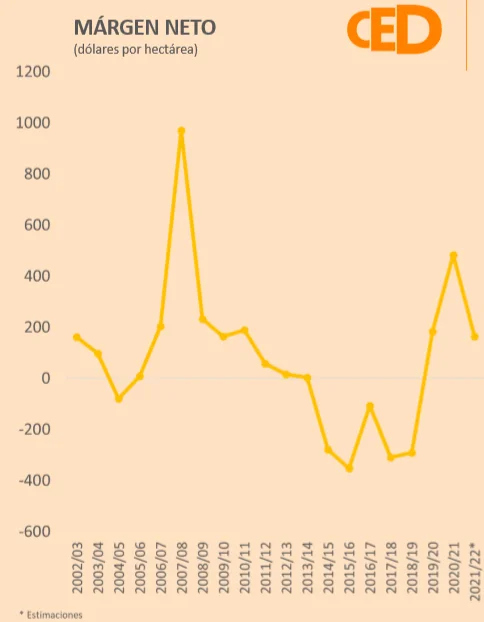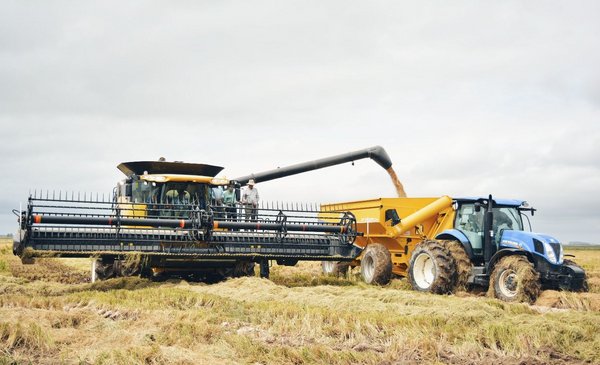The rice harvest of the 2021/22 harvest —which is nearing completion— will have as its “final result the largest rice production in a decade“, indicated the last sectoral bulletin of the rice chain that was released by the Center for Development Studies (CED). This is because the sowing area in the last campaign advanced 15% versus the previous one, while they project good yields of productivity per hectare.
In addition, the The sector will have its third consecutive campaign with positive profit margins.
In the last harvest, 164 thousand hectares were planted (he has). with an rprojected yield of 9,200 kg/hathe production of rice is estimated to reach about 1.51 million tons and it would be the second largest historical record after the record campaign of 2010/11 (1.63 million tons).
CED
The CED sector report recalls that Uruguay “stands out” in the productivity of rice cultivation for having an average annual growth rate of 2% in the last 20 years, with the best performance in Latin America and in the top 5 at the global.
Challenges but positive margin
According to the CED report, the “increase in the price of inputs and some internal costs —measured in dollars— challenged the cost equation in the ponds for the current harvest.” In any case, it stands out that the primary sector “will accumulate three consecutive years of positive margins” given the good harvests and high prices. For the 2021/22 harvest, a net margin per hectare is estimated to be slightly below US$200.

CED
In terms of foreign trade, it is estimated that this year’s productive harvest will generate an income of dividends for the country for at least US$ 500 million, a turnover much higher than the levels of the last eight years. With this amount, Uruguay will be consolidated within the top 10 exporters worldwide.

CED
Uruguayan rice is placed in more than 40 countries and feeds more than 17 million people globally. The European Union, Iraq, Peru, Brazil, Mexico and Turkey are the main destinations for placing the grain. On the other hand, in the previous harvest, Venezuela was once again a relevant destination for the country.
The opportunities and threats
The CED dialogued with relevant actors of the rice chain to process a SWOT analysis (Strengths, Weaknesses, Opportunities and Threats) to have a medium and long-term perspective.
“The rice sector has enormous strengths and a set of opportunities that, if materialized, would underpin its productive performance,” says the sector bulletin.
Among the opportunities, the possibility of advancing in the FTA with the European Union, Turkey and China stands out, the synergy that can be deepened with livestock, the advancement of the Laguna Marín waterway, and the possibility of increasing its production without damaging the environment.
Meanwhile, in terms of weaknesses, the structure of costs in the farms appears, the decrease in the number of producers, high logistics costs and the formation of human capital in the rice industry. In the case of threats, the FTA between Vietnam and the European Union emerged, competition with two players in the region (Brazil and Paraguay) and the efficiency of the fuel and energy market.







